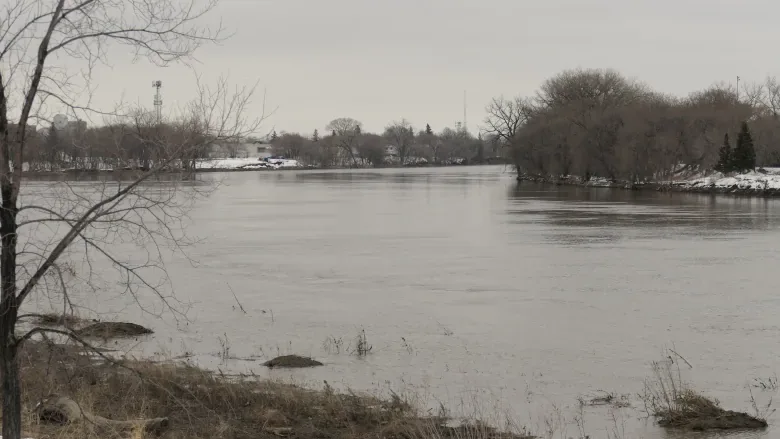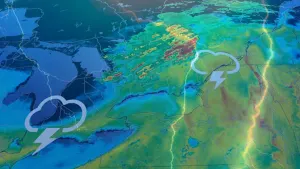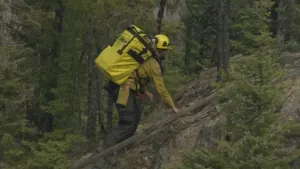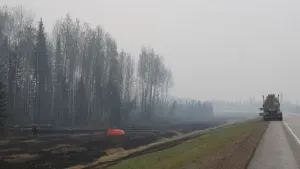
Impending storm could create moderate to major flooding in Red River Valley
Manitoba could face a moderate to major flood along the Red River if an approaching storm system, being eyed nervously by forecasters, leaves as big an impact as expected.
"We are remaining vigilant," Transportation and Infrastructure Minister Doyle Piwnuik said.
Although the Red River Floodway was put into operation earlier this month, it was recently stopped as the river levels receded from the earlier spring runoff.
However, it could be reactivated as early as May 1, said Fisaha Unduche, executive director of Manitoba's hydrologic forecast centre.
FORECAST: Disruptions likely as another major winter storm eyes the Prairies
Even with the floodway's use, river levels at James Avenue in downtown Winnipeg are expected to reach 17 to 19 feet above normal winter ice level.
It was at 14 feet above winter ice level on Wednesday, rising onto tree-lined banks and swallowing the steps that lead to the river trail behind the Manitoba Legislative Building.
"So basically this water, what you see, is going to go [up] another three to five feet," said Unduch, standing at the top of the staircase.

An aerial image shows flooding outside the Morris ring dike during the 2011 flood. (Government of Manitoba)
The system bearing down on the province is another Colorado low — the same type of system as the one that brought last week's snowstorm to the southern half of the province — and is expected to bring 40-80 millimetres of precipitation beginning Friday and ending Sunday.
It could be rain or snow or a mix of both, Unduche said.
"Weather models do not fully agree on the amount, location and intensity of this precipitation event, but there is a very high confidence" that parts of the central and southern Red River basins could see up to 30 centimetres of snow and 40-50 mm of rain on top of that, Unduche said.
"If this forecasted precipitation happens, it will make April the second-wettest month for the Red River Valley since 1950, only exceeded by April 1986."
Daily average temperatures are expected to remain above zero until early next week for most parts of southern and central Manitoba, before dipping down for a couple of days then rebounding again.
They will still be well below the normal high of 13 C for this time of year.
Overland flooding is likely in areas with the most rain, while peak flows on the Red and Assiniboine rivers and their tributaries are not expected to arrive until late April or early May, Unduche said.
The Red's crest, based on forecast temperatures, is predicted to arrive between April 30 and May 7.
Peak flows are expected to be around 55,000 to 75,000 cubic feet per second between Emerson and the floodway inlet south of Winnipeg, which could create moderate to major flooding, Unduche said.
For comparison, the 2009 flood had a maximum flow of 97,000 cfs. The Flood of the Century in 1997 crested at 138,000 cfs.
The 2011 flood was 78,000 cfs, but that still caused the Red to spill its banks and require some communities to close their ring dikes.
Moderate flooding is expected on the Assiniboine River, between the Shellmouth Dam and Portage la Prairie, with peak flows of 10,000-25,000 cfs. That will require operation of the Portage Diversion, Unduche said.
Moderate flooding is also expected on the Souris River between the U.S. border and Wawanesa, on the Pembina, Roseau and Rat rivers and in the Whiteshell lakes area.
Moderate flooding is defined as flooding in low-lying areas without causing significant disruptions.
There is a low risk of flooding in northern Manitoba and on the big lakes.
Of course, depending on the intensity of the rain, that could change, Unduche said.
Flood forecasters will keep monitoring precipitation and collect data about snowfall amounts, he said. Updated flows and levels across the basins will be made available as the system continues to develop in the coming days.
This article was originally published by CBC News and written by Darren Bernhardt









